| Columns Retired Columns & Blogs |
JA1 said it all ..... "It is an extraordinarily well engineered, exceptionally powerful amplifier" :-) ........
I performed a full set of measurements on the McIntosh MC462, using my Audio Precision SYS2722 system (see the January 2008 "As We See It"). Before doing any testing, I preconditioned the MC462 by running its 8 ohm output at one-third power for 30 minutes into 8 ohms—thermally the worst case for an amplifier with a class-AB or class-B output stage. At the end of that time the heatsinks were very hot, at 158.6°F (70.3°C). I usually precondition amplifiers for an hour, but I was concerned that the MC462 would get even hotter.
The McIntosh's voltage gain varied according to which output Autoformer tap was used and whether the balanced or unbalanced inputs were used. From the balanced inputs, the 8 ohm tap's gain into 8 ohms was a lower-than-usual 22.9dB, the 4 ohm tap's gain lower at 20.4dB, and the 2 ohm's even lower, at 17.4dB. The gains using the unbalanced input were 6dB higher rather than 6dB lower; the latter is usually the case. All three sets of outputs preserved absolute polarity (ie, were non-inverting), the XLR jacks being wired with pin 2 hot, the modern standard.
The MC462's unbalanced input impedance measured very close to the specified 22k ohms from 20Hz to 20kHz. The balanced input impedance was twice the unbalanced, as expected. The output impedance was lowest from the 8 ohm Autoformer tap, at 0.09 ohm at 20Hz and 1kHz, rising to 0.13 ohm at 20kHz. The 4 ohm tap's output impedance was almost twice that of the 8 ohm tap—not what I was expecting—while the 2 ohm tap's was 0.14 ohm at low and middle frequencies, rising to 0.185 ohm at the top of the audioband. As a result, the response with our standard simulated loudspeaker varied by ±0.2dB (fig.1, gray trace). The channels' levels match to within 0.1dB, and the audioband response into 8 ohms (blue and red traces) and 4 ohms (cyan, magenta) is flat up to 20kHz. Into 2 ohms (green trace), a slight top-octave rolloff reaches –0.4dB at 20kHz. The MC462 reproduced a 1kHz squarewave with short risetimes and flat tops and bottoms (fig.2), suggesting that the amplifier's use of output transformers doesn't affect its low-frequency reproduction. A 10kHz squarewave was reproduced without overshoot or ringing (fig.3).
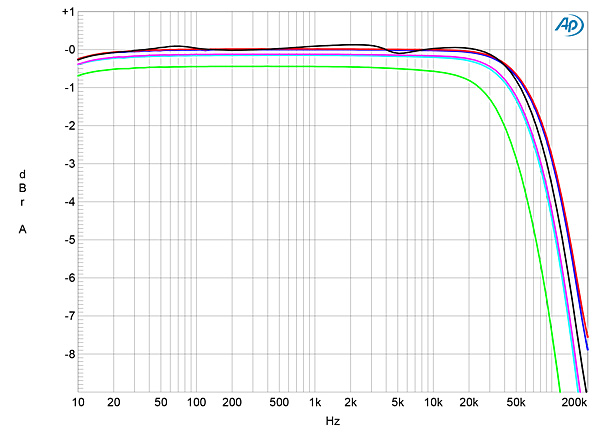
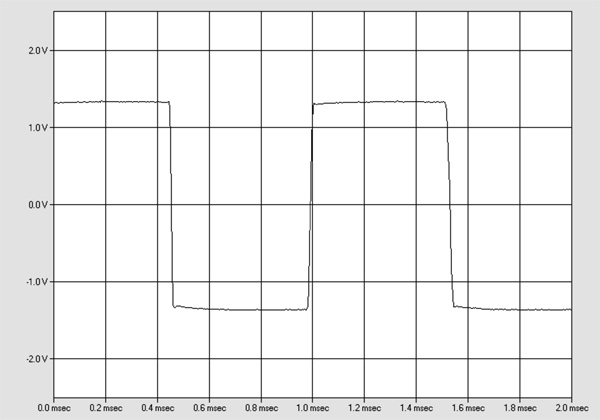
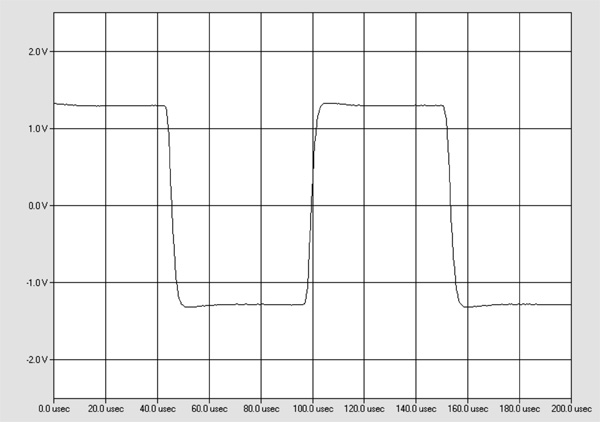
The McIntosh MC462's channel separation (fig.4) was superb, measuring close to 120dB in both directions below 1kHz, though it did decrease to 70dB at 20kHz, due to capacitive coupling between the channels at some point in the circuit. The wideband, unweighted signal/noise ratio, ref. 2.83V and measured at the highest-gain output (8 ohms) and with the balanced input shorted to ground, was equally superb, at 87dB. This ratio improved to 96.2dB when the measurement bandwidth was restricted to the audioband, and to 99.6dB when A-weighted. Spectral analysis of the MC462's noise floor (fig.5) revealed spuriae at 60Hz and its odd-order harmonics, these due to magnetic interference from the AC power transformer. All of these spuriae are very low in level, however, and will not be audible.

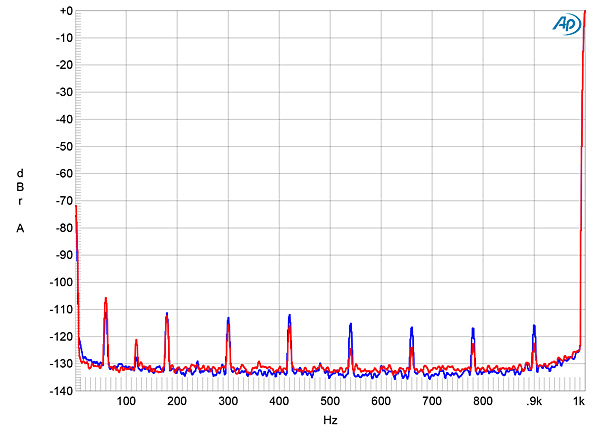
McIntosh specifies the MC462 as being able to deliver 450Wpc (26.5dBW) into a load matched to the nominal output Autoformer tap. With clipping defined as being when the THD+noise reaches 1%, fig.6 indicates that the MC462 exceeded its specification even with both channels driven, its 8 ohm output clipping at 516Wpc into 8 ohms (27.1dBW). The trace in this graph stops at 1%, as that is when the amplifier's protection was triggered. Into 4 ohms (fig.7), the McIntosh's 8 ohm output clipped at 720Wpc (25.6dBW). It's fair to note that I don't hold the wall voltage constant for this test; with both channels clipping into 4 ohms, the wall voltage had dropped from 121 to 115.4V. The MC462's 2 ohm output delivered 190Wpc (22.8dBW) with both channels driven into 8 ohms at 1% THD+N, 298Wpc with both channels driven into 4 ohms (21.7dBW, fig.8), and 536W (21.3dBW) with one channel driven into 2 ohms (fig.9).
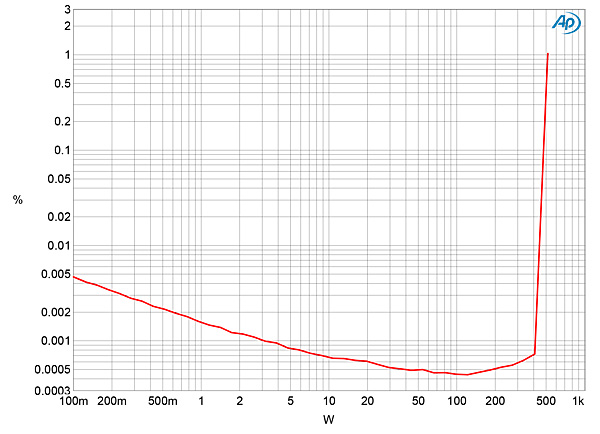
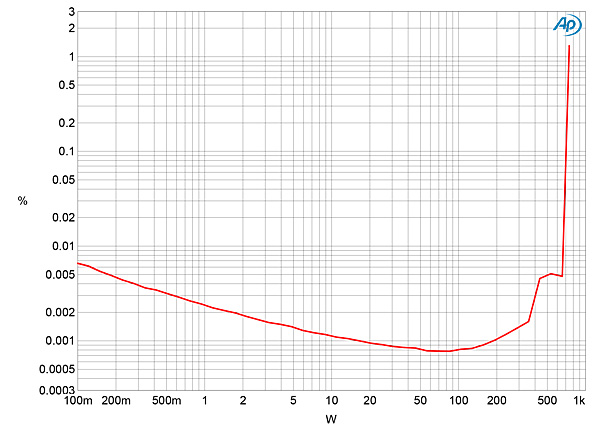
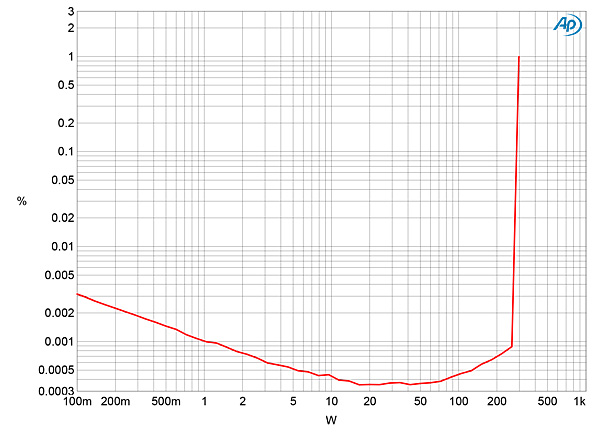
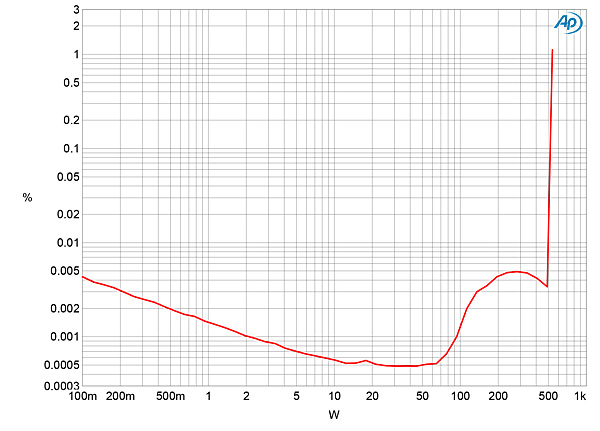
Figs. 6–9 indicate that distortion is extremely low, lying below the noise floor at powers below 30W or so. I therefore plotted how the THD+N changed with frequency from the 8 ohm output at a level of 28.3V, equivalent to 100W into 8 ohms and 200W into 4 ohms, where I could be sure I was looking at distortion rather than noise. The result (fig.10) reveals that the THD into 8 ohms (blue and red traces) and 4 ohms (cyan, magenta) rises above 1kHz, but still remains below 0.007%. I haven't shown the THD+N trace into 2 ohms from this output, because it was >2% in the midrange and treble and >3% in the bass at 28.3V, which is equivalent to 400W into 2 ohms. The moral: Match the MC462's nominal output to the lowest impedance magnitude of the loudspeaker used.

The distortion signature is primarily of the second and third harmonics (fig.11); these components are very low in level, even at high powers (fig.12), though the right channel (red trace) had slightly more distortion than the left (blue). Tested with an equal mix of 19 and 20kHz tones at high power into 8 ohms from the 8 ohm output, the levels of higher-order intermodulation products were extremely low (fig.13), and the second-order difference product at 1kHz lay at a "roots-of-the-universe" –114dB (0.0002%).
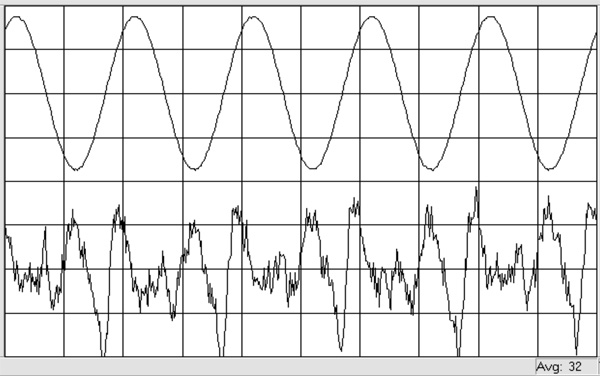
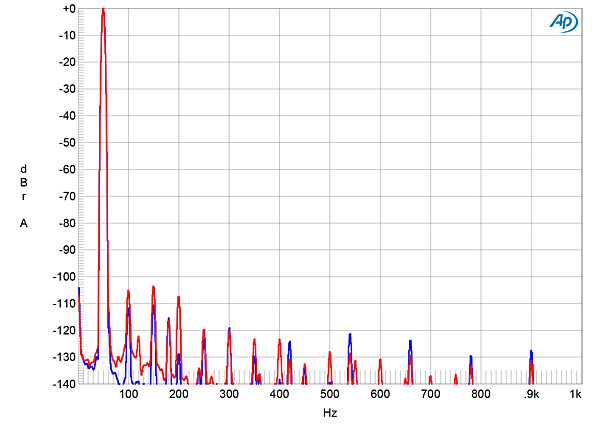
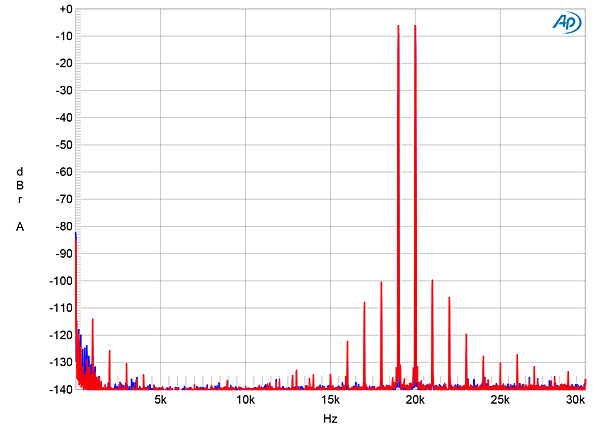
Summing up the McIntosh MC462's measured performance is easy: It is an extraordinarily well-engineered, exceptionally powerful amplifier.—John Atkinson

JA1 said it all ..... "It is an extraordinarily well engineered, exceptionally powerful amplifier" :-) ........

... why do we need recordings with a resolution of any greater than about 18.5 bits?
Also, if the moral is to match the MC462's nominal output to the lowest impedance magnitude of the loudspeaker used, then which tap - 4 ohm or 2 ohm - is the better choice for a speaker that has a minimum impedance of 3 ohms, such as the B&W model used by the reviewer?
Depending upon which amplifier output tap is selected, there seems to be a trade-off between maximum power output and lowest distortion.

Yet why review such an amp with these speakers that are easy loads, even a NAD3020 could drive them? Surely those that intend to buy this 50kg back breaker of an amp, are going to go for more substantial speaker than these?
This amp should have been reviewed with Wilson Alexia or similar to see if it perceived persona is more than just skin deep, and not a show pony.
Cheers George

Correct me if I'm wrong, but a single-winding autoformer that McIntosh uses will not block DC. Only a transformer, such as used on most tube amplifiers will do that.

@Paul IRS
You are right about that.
An autotransformer does not provide electrical isolation, as it is a single winding transformer.
Primary and secondare are connected both electrically and magnetically.
Double winding transformers are only connected magnetically.
Hence the DC isolation.
Anyways a two winding transformer is not very good at blocking DC, as the core can be saturated, and then build up heat.
Thus the primary task of a transformer is either step-up or step down or isolation, not a highpass filter
Generally the autotransformer is a step up or step down device only.
Historically the autotransformer came into HIFI because of lack of power. The Atotransformer coupled as a step-up transformer could increase the voltage swing on the secondary side. At that time most speakers were relatively high impedance, thus a higher spl was possible.
In modern times high voltage swings are no problem, as transistors have develloped, so no one uses transformers anylonger besides MacIntosh.
For what ever reason they still do, I don´t know.
No transformer is a linear component, they are pretty heavily inductive,
so using a transformer in the output, will introduce distortion of the signal.
Of course this can be reduced with NFB, but basically it is a workarround of a problem, that isn´t really there.

"No transformer is a linear component, they are pretty heavily inductive,
so using a transformer in the output, will introduce distortion of the signal."
Well said. That said, there are a variety of distortion forms out there, and some of them are euphonic. No less an engineer than Rupert Neve has been using transformers in his recording consoles for a long time, and it's not because he didn't receive the memo about transformer-related distortion. In short, McIntosh probably has a fundamental sonic reason for favouring autoformers.
Cheers,
Alan Tomlinson

@Alan Tomlinson
You might be right, that specific persons regard the distortion introduced by transformers as euphonic, and thus musical in some sense.
This point of view is not shared by everyone though.
I.e. if you look at very high end microphones like DPA (used for measurements by Stereophile, amongst many), Neuman, Shoeps etc. do have TL versions of their top performers. (TL = Transformer Less)
The TL versions are recommended over the transformercoupled ones, but the transformercoupled can be neccesary in studios with long and mixed cable runs.
In smaller set-ups with few mikes, the TL is recommended for its cleaner sound and better transparancy.
I´ve heard the difference, and there is no doubt, that the TL is the better choice in the purist cases.
But the choice of microphones and the choice of a lot of other recording gear, can be seen as a part of the musical expression.
An A/B stereo recording of Nirvana ore something, would probably not work in real life.
But IMO this kind of deliberate colouration should be held inside the recording studios. I don´t think it is wise to introduce stuff like that in the reproduction chain, as well as I cannot imagine that doing so will go well most of the time.
Good and sensible engineering with as few idiosyncratic elements as possible, will be best for the long haul I think.
Not that listening should be left out of devellopmentlabs, indeed not.
But the chances for good sound are present, but not in anyway garantied by good measurement results. On the other hand, I´ve not yet experienced good sound from equipment with bad measurements.
I don´t like distortion, no matter how euphonic it might be. It´s always there, and will be recognised as distortion eventually.
Best regards
Soren

No, an autoformer can't completely block dc. But when you consider the dc resistance of the autoformer winding, where the input tap is connected to the output transistors, and the other end of the winding is ground, you're probably looking at something on the order of a fraction of an Ohm. So, it's pretty likely that a dc fault condition would let very little voltage through to the speaker and pretty quickly blow an internal fuse in the amplifier. I believe that later Mac amps also have considerable additional fail safe circuitry in them that would disconnect the speakers in the event of any dc offset condition.

There is information about transformer and auto(trans)former in Wikipedia :-) ..........

The autoformer will present a very low impedance to DC. The older autoformers on McIntosh amplifiers are approximately .5H winding inductance (more on that in a bit) and less than .2 ohms DC resistance. If the amplifier sticks to one rail the autoformer will cause the primary mains fuse to blow protecting the speakers. It is an elegant solution to DC protection.
The inductance limits the autoformer from becoming a substantial part of the load for audio frequencies. As long as the high pass filtering for the amp is at a high enough frequency.
The autoformers themselves are incredibly linear, even the ones I've tested from McIntosh amplifiers from the mid 70's and earlier will pass a full power signal at less than .05% THD.

200 mOhms is actually a lot in that part of an amp.
Best Regards
Soren

Not really...that's still a damping factor of 40 for an 8 ohm speaker which is more than enough to minimize frequency response variation and not impact time domain performance in an audible significant way.


..is not just a function of the DCR of the autoformer. There's the feedback loop which effectively lowers the output impedance to very low values. JA has measured this in the review. The effective output impedance is on the order of .09 -.13 ohms at the 8 ohm tap...certainly more than adequate. I realize you don't like the amp, and I'm not here to defend it as I think it's overkill for a home audio system. But there's no disputing that it measures quite well in most respects. Your philosphical objections to autoformers not withstanding, what are your issues with it?

My issues with autoformers is that you get high output impedance.
0,09 Ohms makes a DF @ 89, and that is not very much for a solid state amp.
So the McIntosh has the disadvantage of a low dampingfactor and on top of that it stil has a global feedback loop.
When using global feedback, you should at least have a higher DF than even non feedback amplifiers can achieve.
You can se it clearly on its power delivery.
There is not very much distortion, but power decreases rappidly with load.
That means when you call upon its power into a real speaker load, it will not stay linear at all levels.
Thus the non linearities will be amplitude related, and will not show on a THD measurement.
I really don´t like the idea of "hiding" an amps misbehavior behind a transformer, no matter what type it might be.

If you think of 6db per bit for dynamic range, one would think that 96db would be enough. Now I doubt there are many 16 bit chips made any more and 24 bit chips are so advanced and of such high quality and can playback more formats.
What I want is more samples per second and find that at 96khz there is just a much more smoother sound, more accurate to me and that is what I want to hear. I know mathematically that 192khz is better resolution, but my nearly 72 year old ears have a hard time hearing the improvement, but I'm sure it is there, probably. There is no mistake to me that 2496 is a great format for hearing what there is recorded in PCM. In my home studio I record everything at 2496 and some material at 24192.
DSD is even better, but now that is pretty much limited to downloads as no one I know is making affordable SACD players anymore. I wish they were. This Mac amp will handle anything you pass through it and, as the review showed, reveals flaws in poorly recorded material.

Denon makes DCD-1600NE, which can play CD and SACD ........ MSRP $1,199 :-) ..........

... more likely to be found in the video department.
A few DVD/Blu-ray disc players have SA-CD compatibility and a set of RCA audio output jacks.
The $330 Yamaha BD-S681 is one such unit.
https://usa.yamaha.com/products/audio_visual/blu-ray_players/bd-s681/index.html

Did you compare this amplifier directly to your tubed McIntosh? Also have you heard the lower powered models that are not quad balanced and do they sound similar? I have owned tubed (MC275 mark 6) and solid state (MC252 I think) and they have a similar house sound. What do you think?

Greetings, Thanks for your focused questions.I still own my wonderful MC275; of course with ability to swap tubes comparisons will change.My review comments do refer to prior extended listening to the MC275. Please see my question to Charlie Randall in the attached interview now posted, about the "McIntosh Sound." Some people hit on Mac for this- I view it as a strength.
No, haven't spent recent in-house time with prior solid-state McIntosh amps- only under show and shop conditions. Enjoy the long and winding Mac road! - Best, Sasha M.

Hi Sasha, you tested the MC462 with Harbeth M30.2. I have the MC452 and recently acquired M30.2. Which speaker taps you use and prefer for M30.2? Thanks.

Hi Sasha,
I see we have the same dac. Have you tried the Dac direct to the 462 and if so is it compatible?
I am thinking of buying a 462, but want to check this out first.
Thanks,
Jeff

Hello,
I have Tannoy Canterbury GR with Nominal impedance 8 Ohms and Minimum Impedance 5 Ohms. Which output Autoformer tap should I use?
Thanks.

Hello, Mr. Matson, I finally made the plunge to purchase this amplifier based on your excellent and well written review of this product. Much appreciated, I look forward to seeing more McIntosh products looked at in the future. I would like to suggest Stereophile takes a look at the C2700 tube preamplifier, and the C53 or C70 solid state preamplifiers. Thanks for your consideration.

I would very much like to see a review of the most affordable McIntosh Integrated. Seeing reviews of kit that I cannot afford depresses me! Could you? Please.